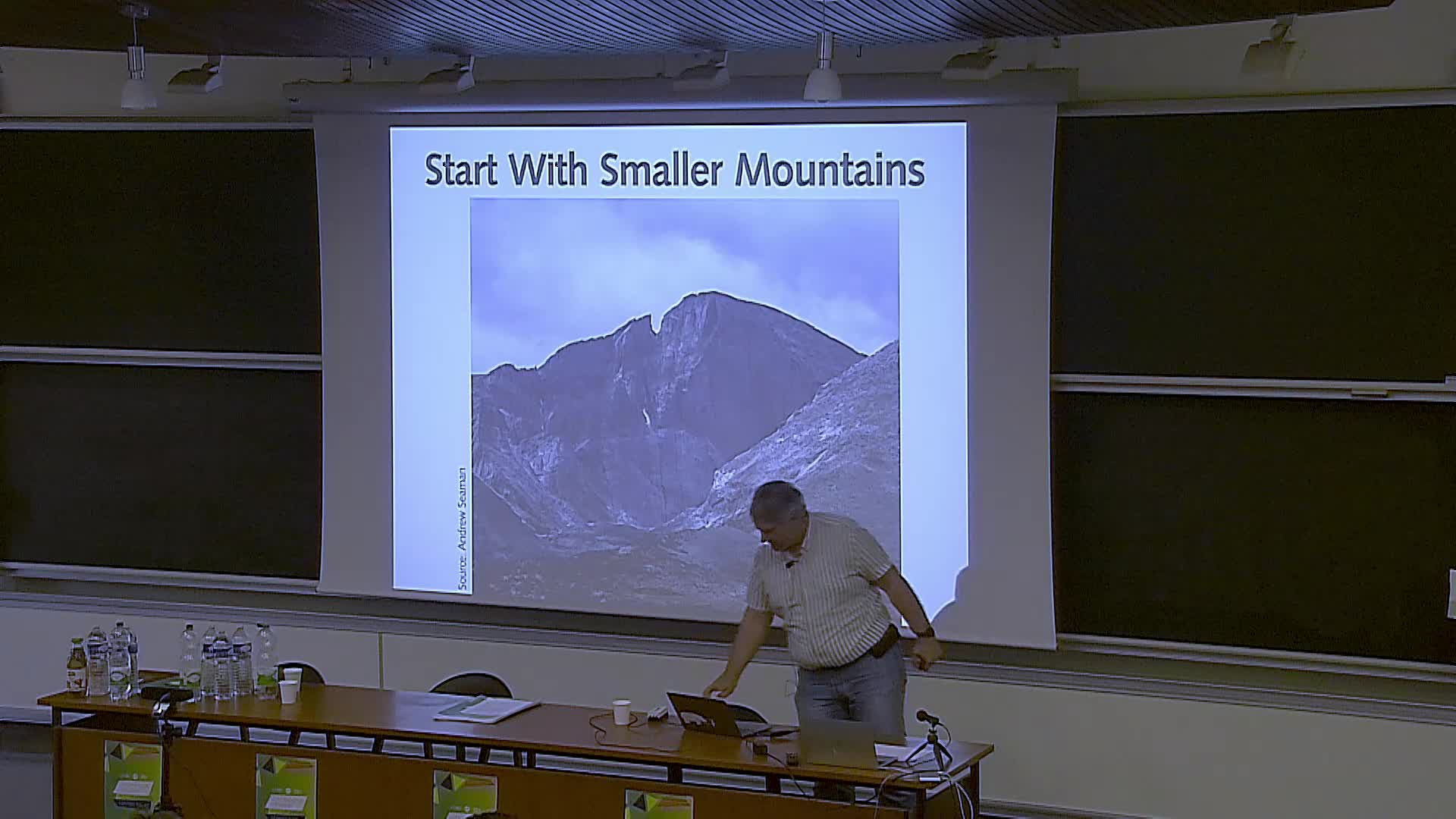Notice
Michel Ledoux - Isopérimétrie dans les espaces métriques mesurés
- document 1 document 2 document 3
- niveau 1 niveau 2 niveau 3
Descriptif
Le problème isopérimétrique (à volume donné, minimiser
la mesure de bord, et déterminer les ensembles extrémaux),
remonte aux temps les plus anciens. Tout à la fois, il peut se
formuler de façon générale dans un espace métrique mesuré,
et dans le même temps assez peu d’exemples explicites, en
particuliers de minimiseurs, sont connus. Les questions se
portent ainsi vers des propriétés de comparaison avec les
des espaces modèles, comme ceux de la géométrie, euclidienne,
sphérique et hyperbolique (pour lesquels les boules constituent
les éléments extrémaux du problème isopérimétrique).
L’exposé sera consacré à une présentation du problème
isopérimétrique dans les espaces métriques mesurés, et à la
résolution récente d’un théorème de comparaison avec
le modèle sphérique à travers des minorants de courbure issus
de la théorie du transport de masse.
Intervention / Responsable scientifique
Thème
Documentation
Liens
Sur le même thème
-
Tuan Ta Pesao : écritures de sable et de ficelle à l'Ile d'Ambrym
VandendriesscheEricCe film se déroule au Nord de l’île d’Ambrym, dans l’archipel de Vanuatu, en Mélanésie...
-
"Le mathématicien Petre (Pierre) Sergescu, historien des sciences, personnalité du XXe siècle"
HerléaAlexandreAlexandre HERLEA est membre de la section « Sciences, histoire des sciences et des techniques et archéologie industrielle » du CTHS. Professeur émérite des universités, membre effectif de l'Académie
-
Webinaire sur la rédaction des PGD
LouvetViolaineRédaction des Plans de Gestion de Données (PGD) sous l’angle des besoins de la communauté mathématique.
-
Aurel PAGE - Cohomology of arithmetic groups and number theory: geometric, asymptotic and computati…
PageAurel regisIn this lecture series, the first part will be dedicated to cohomology of arithmetic groups of lower ranks (e.g., Bianchi groups), their associated geometric models (mainly from hyperbolic geometry)
-
Phong NGUYEN - Recent progress on lattices's computations 2
NguyenPhong Q.This is an introduction to the mysterious world of lattice algorithms, which have found many applications in computer science, notably in cryptography. We will explain how lattices are represented by
-
Alexander HULPKE - Computational group theory, cohomology of groups and topological methods 5
The lecture series will give an introduction to the computer algebra system GAP, focussing on calculations involving cohomology. We will describe the mathematics underlying the algorithms, and how to
-
Zachary Himes - On not the rational dualizing module for $\text{Aut}(F_n)$
Bestvina--Feighn proved that $\text{Aut}(F_n)$ is a rational duality group, i.e. there is a $\mathbb{Q}[\text{Aut}(F_n)]$-module, called the rational dualizing module, and a form of Poincar\'e duality
-
Tobias Moede - Coclass theory for nilpotent associative algebras
The coclass of a finite p-group of order p^n and class c is defined as n-c. Using coclass as the primary invariant in the investigation of finite p-groups turned out to be a very fruitful approach.
-
Oussama Hamza - Hilbert series and mild groups
Let $p$ be an odd prime number and $G$ a finitely generated pro-$p$ group. Define $I(G)$ the augmentation ideal of the group algebra of $G$ over $F_p$ and define the Hilbert series of $G$ by: $G(t):
-
Gabriele NEBE - Lattices, Perfects lattices, Voronoi reduction theory, modular forms, computations …
NebeGabrieleThe talks of Coulangeon will introduce the notion of perfect, eutactic and extreme lattices and the Voronoi's algorithm to enumerate perfect lattices (both Eulcidean and Hermitian). The talk of Nebe
-
Alexander HULPKE - Computational group theory, cohomology of groups and topological methods 4
The lecture series will give an introduction to the computer algebra system GAP, focussing on calculations involving cohomology. We will describe the mathematics underlying the algorithms, and how to
-
Alexandre Booms : « Usage de matériel pédagogique adapté en géométrie : une transposition à interro…
« Usage de matériel pédagogique adapté en géométrie : une transposition à interroger ». Alexandre Booms, doctorant (Université de Reims Champagne-Ardenne - Cérep UR 4692)








